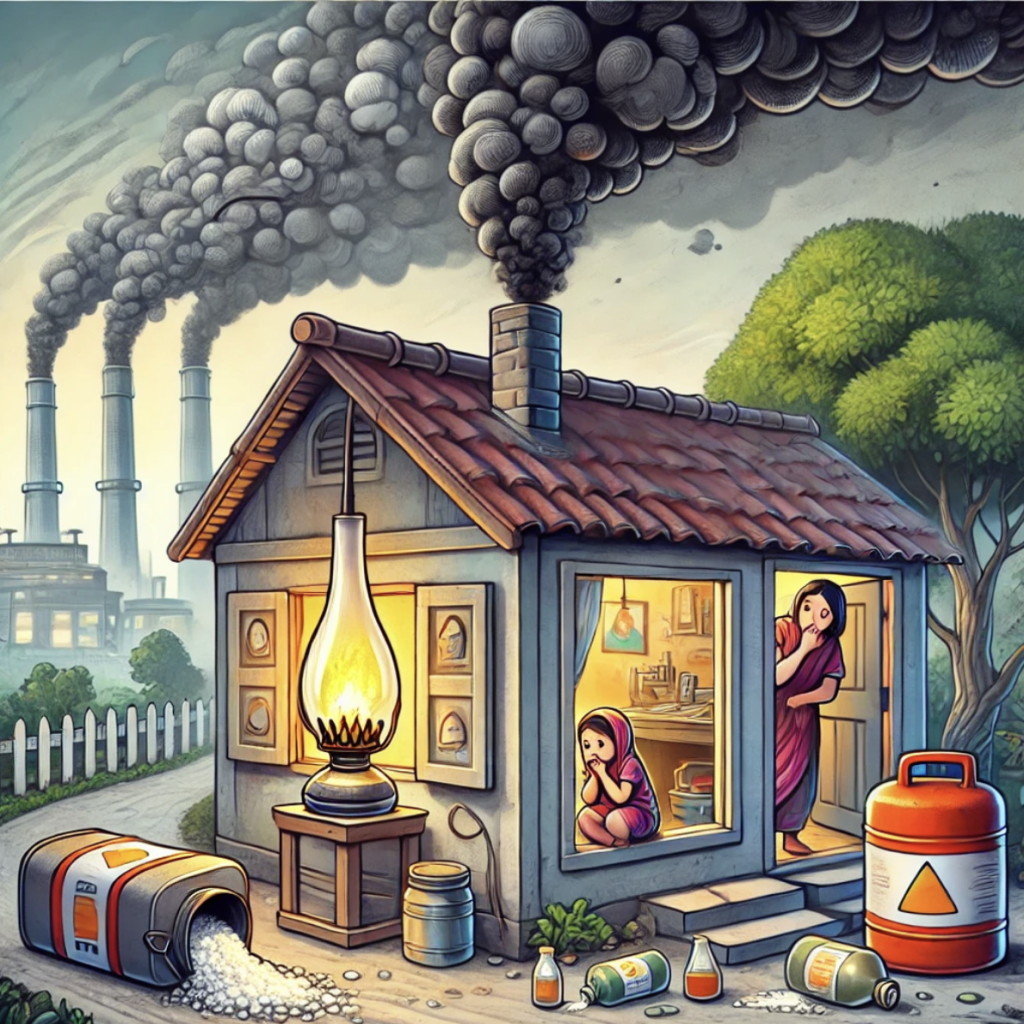The primary use of kerosene as a cooking and lighting fuel began with modern civilization. Although kerosene remains popular due to its low cost and widespread availability, it is not a clean energy form, imposing health-related, environmental, and economic problems. Therefore, as the world moves toward more sustainable and renewable energy forms, discouraging kerosene and promoting cleaner fuels is essential.

Why Kerosene Is Not a Clean Energy Source
- Air Emission and Health Hazards
Kerosene combustion produces harmful pollutants such as CO, SO2, and PM2.5 that inflict indoor and outdoor air pollution leading to life-threatening diseases, including respiratory diseases, heart ailments, and eye irritations.
Prolonged exposure to kerosene fumes has been linked by the World Health Organization with lung infections, asthma, and chronic obstructive pulmonary disease (COPD).
Household kerosene lamps create black carbon discharged into the atmosphere, a potent greenhouse gas that causes climate change.
- Environmental Effects
Kerosene derives from crude oil, a non-renewable fossil fuel. Its production, transport, and use are associated with greenhouse gas emissions that accelerate global warming. Some of the environmental effects are:
Oil spillages during kerosene extraction and transportation contaminate marine habitats and ecosystems.
Deforestation in regions where kerosene is used along with firewood as the primary source of energy.
- Kerosene Fire and Safety Hazard
Kerosene is an extremely flammable liquid, making it a fire hazard in residences. Accidental spills and improper storage are usually the causes of household fires in which people get injured or killed and property is destroyed.
In many places, kerosene is stored in unregulated containers, making accidental ingestion much more likely, especially among young children.
- Economic and Social Impacts
Financial Burden to Low-Income Families: Kerosene has found to be affordable due to subsidization by government. However, the price of kerosene is heavily influenced by prices of crude oil in the international market, making it an unstable source of energy for low-income households.
Energy Efficiency: Kerosene appliances are generally highly inefficient compared to modern day clean alternatives, such as solar power, electric cooking facilities, and LPG.
Benefits of Kerosene
However, kerosene has some advantages due to which it is still being used.
Availability and Access: Kerosene is available throughout the country, especially in rural areas without any modern energy infrastructure.
Energy Density: Kerosene contains more energy than most renewable energy sources, which makes it very suitable for such applications as aviation that require long-lasting fuel supply.
Backup Fuel: In some areas, kerosene acts as a backup source of energy during power outage.
Need for Transition from Kerosene
Governments, companies, and individuals should encourage clean energy alternatives to kerosene, such as:
Solar Energy: Solar lanterns and home systems are viable, renewable, and economical substitutes for kerosene lighting.
Liquefied Petroleum Gas (LPG): LPG is cleaner and more efficient cooking fuel.
Electricity and Induction Stoves: As expansion occurs into power grids, electricity-based cooking solutions should be promoted.
Biogas: Generated from organic waste, biogas is a clean and inexpensive source of cooking and heating energy.
Conclusion
However, as crucial as kerosene is to increased energy access, its drawbacks outweigh the advantages; it impacts health, the environment negatively, and is unsafe. Because cleaner and more efficient energy options have been made available, the world should move away from kerosene usage. This should be stimulated through policies and subsidies and increased sensitization for governments and organizations. It is a push for a future that is cleaner and healthier.

